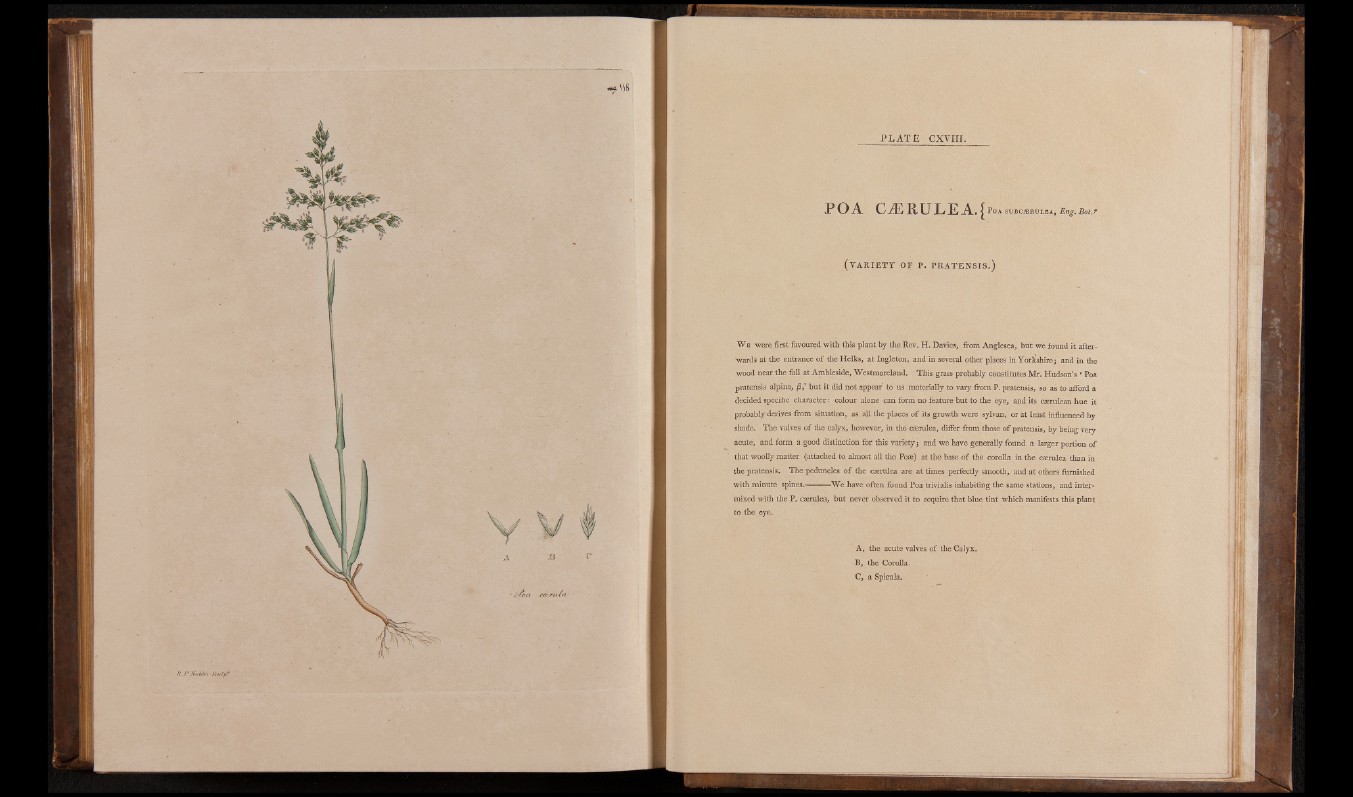
POA CjERULEA.{ POA SUBCJERULEA, Eng. B ot.f
( v a r i e t y o f p . p r a t e n s i s . )
We were first favoured with this plant by the Rev. H. Davies, from Anglesea, but w e found it afterwards
at the entrance o f the Helks, at Ingleton, and in several other places in Yorkshire; and in the
wood near the fall at Ambleside, Westmoreland. This grass probably constitutes Mr. Hudson’s f Poa
pratensis alpina, /3,’ but it did not appear* to us materially to vary from P. pratensis, so as to afford a
decided specific character: colour alone can form no feature but to the eye, and its caerulean hue it
probably derives from situation, as all the places of its growth were sylvan, or at least influenced by
shade. The valves of the calyx, however, in the caerulea, differ from those of pratensis, by being very
acute, and form a good distinction for this variety; and w e have generally found a larger portion of
that woolly matter (attached to almost all the Pose) at the base o f the corolla in the caerulea than in
the pratensis. The peduncles o f the caerulea are at times perfectly smooth, and at others furnished
with minute spines.---------We have often found Poa trivialis inhabiting the same stations, and intermixed
with the P. caerulea, but never observed it to acquire that blue tint which manifests this plant
to the eye.
A, the acute valves of the Calyx.
B, the Corolla.